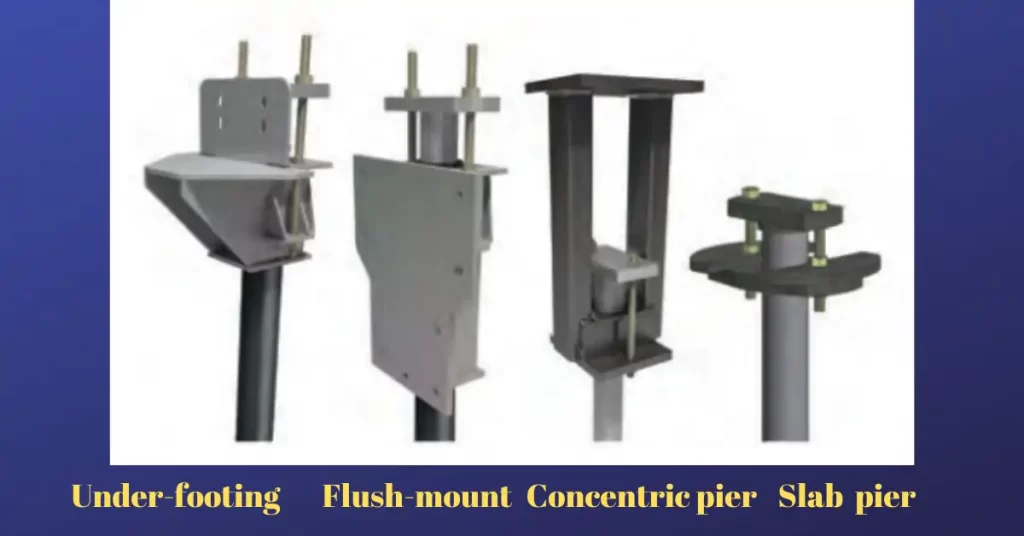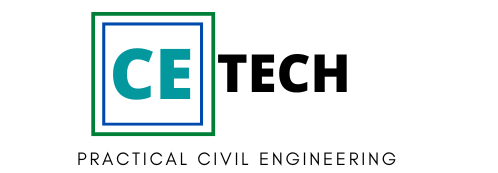Push piers commonly referred to as push piers, jacked piles, resistance piers, or hydraulically driven piers are structural support elements used in foundation repair and stabilization.
These solutions were initially developed to prevent future building settlements and to increase the load-bearing capacity of the foundations. Push pier systems have a patent history dating back to the late 1800s, such as Breauchard’s patented system in 1896. They have been used since those early applications utilizing a common methodology of pushing hollow, tubular iron columns in sections to a suitable load-bearing stratum.

Modern push piers are also high-strength steel tubular sections of around 36 inches. The length may vary according to their type. An internal slipfit connection is used to pair the pier tube pieces. The connection is often only used for compression situations because it is not pinned or bolted.

Push-pier foundation support systems are considered retrofit systems since they require an existing structure to provide the reaction necessary to push or drive the piers to a firm layer of soil or rock. These early pier systems were often placed beneath the opposing sides (staggered or in pairs) of a building wall or immediately beneath the middle of the wall.
Push-pier systems are provided to address foundation settlement issues, which occur when a building’s foundation sinks or shifts due to soil movement, moisture changes, or other factors.
Push piers are typically made of steel and consist of two main components: a steel pier section and a bracket that attaches to the foundation footing. The purpose of the bracket is to transfer the load from the foundation to the stable soil layer through the push piers.
The foundation bracket is produced in 4 types depending on the position where they are fixed and the type of structure or the purpose of their application.
1. Under-footing bracket: This type is used in retrofit works and is fixed below the existing footing.
2. Concentric bracket: This type of bracket can be used in new construction and it is secured, directly beneath the footing and foundation wall.
3. Flush-mounted bracket: This type is employed when the support is significantly strong and is fixed to the side of the footing or foundation wall.
4. Slab pier bracket: This type of bracket is used in slab repair and is fixed below existing slabs.

The installation process involves driving the steel pier sections deep into the ground until they reach stable soil or bedrock beneath the problematic soil layers. This provides a strong foundation support that can help lift and stabilize the settling foundation. The weight of the structure is then transferred from the unstable soil to the load-bearing strata below through the piers.
Push piers are an effective solution for addressing foundation settlement because they can provide both immediate stabilization and the potential to lift the foundation back to its original position. They are commonly used for residential and commercial properties and are often preferred when soil conditions are unsuitable for other methods, like mud jacking or helical piers.
Push pier systems are typically used for underpinning existing structures in the following applications:
• To stabilize settled foundations or slabs
• To stabilize and lift settled foundations or slabs
• To provide increased capacity (additional support) for existing foundations or slabs
• To provide foundation support while adjacent excavations are made
Professional assessment and installation are essential for determining whether push piers are the right solution for a particular foundation issue. Consulting with experienced foundation repair specialists can help ensure that the appropriate solution is chosen to restore the structural integrity of the building.
how do push piers work
Push piers are driven into the ground hydraulically through the bracket making use of the resistance of the weight of the structure. The installation is performed after the bracket is fixed to utilize the resistance force of the weight of the building. The exception are concentric brackets which are driven without the fixing of the brackets.
The pier sections are added on top of one another and driven until the stable soil layer is reached. The driving equipment consists of hydraulic cylinders, a lifting cylinder, and a driving stand. The driving stand supports the hydraulic and lifting cylinder.
After the stable soil layer is reached the structure either begins to lift or the target pressure or load is attained. After the stable soil layer is reached the weight of the structure is transferred to the brackets through the piers to the stable soil layer or bedrock.
Push piers installation is performed in two stages. The first stage of installation involves driving using a hydraulic jacking arrangement that utilizes the hydraulic cylinder. This stage of driving is employed to transfer the load from the foundation to a firm-bearing soil layer or rock.

The second stage of installation is aimed at stabilizing the foundation loads and lifting to desired levels. In this stage, the lifting cylinders are utilized to multiple numbers of piles to stabilize the loads among them and lock off the final load. If necessary lifting is possible at this stage.
The process involved in installing push piles:
Identification of Problem Areas: Engineers assess the foundation’s condition to identify areas that are sinking due to weak or shifting soil.
Installation of Piers: Small holes are excavated near the foundation’s footing. Steel push piers, consisting of segments, are driven hydraulically into the ground until they reach load-bearing soil or bedrock.
Load Transfer: The weight of the structure is gradually transferred from the unstable soil to the piers as they are driven deeper into the ground. This effectively provides support for the foundation.
Lifting if Necessary: In some cases, once the piers are installed, they can also be used to lift the foundation slightly to its original level. This helps in correcting uneven or sloping floors and walls.
Stabilization: As the piers are driven into the stable soil, they anchor the foundation and prevent further settling or sinking. This provides a lasting solution to foundation problems.
Push piers are an effective solution for addressing foundation settlement issues caused by soil movement, water infiltration, or other environmental factors. They are commonly used in residential and commercial properties to restore structural integrity and prevent further damage.

